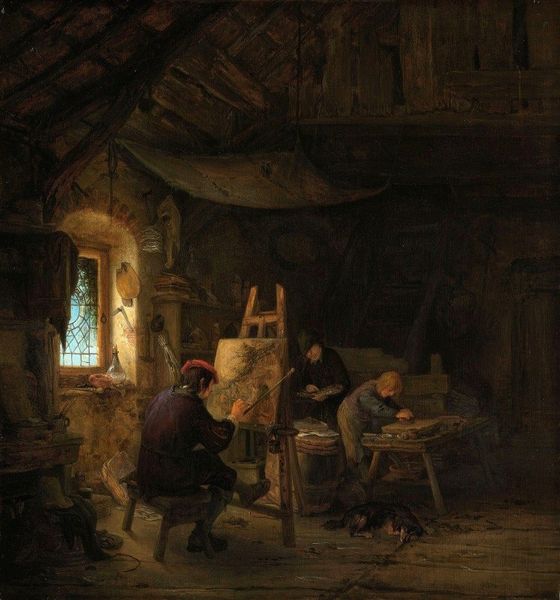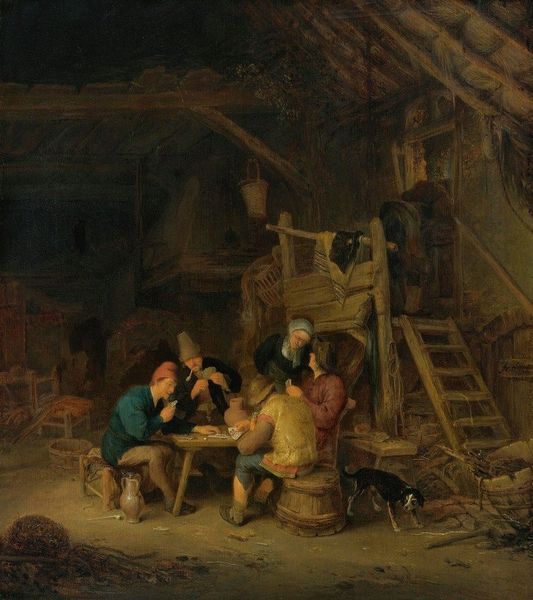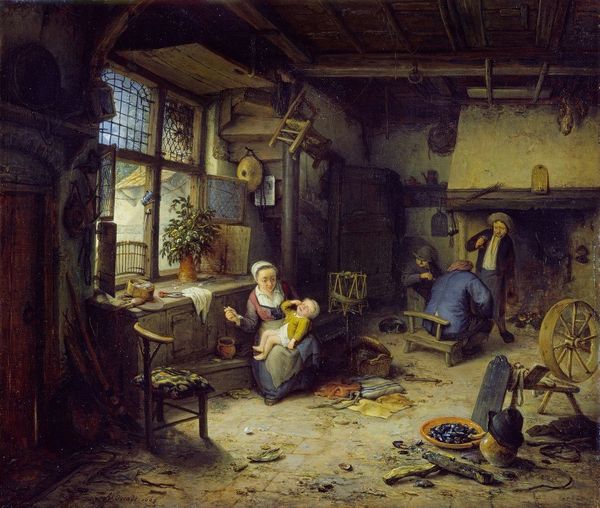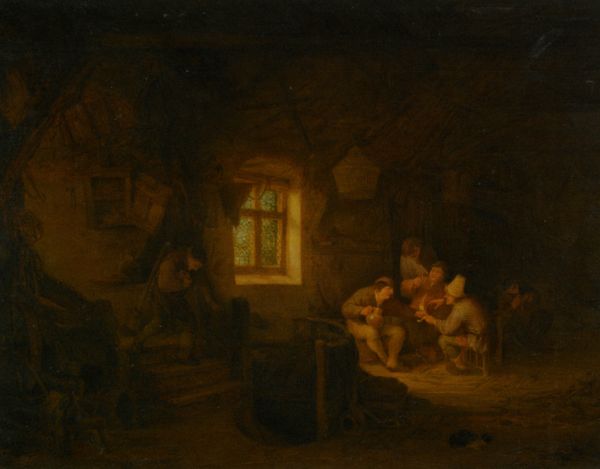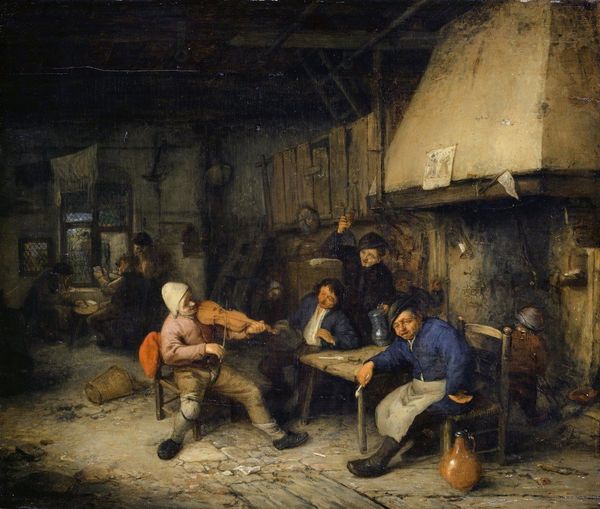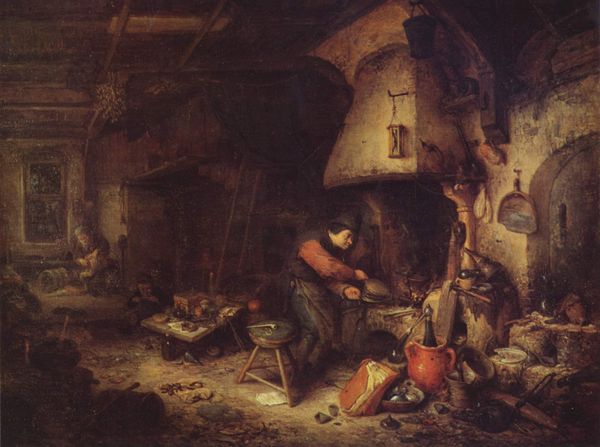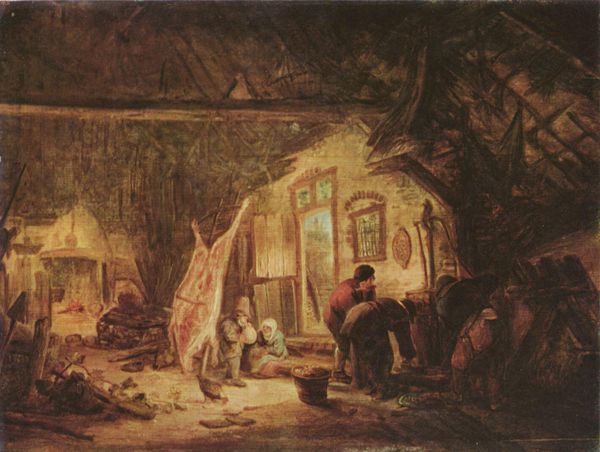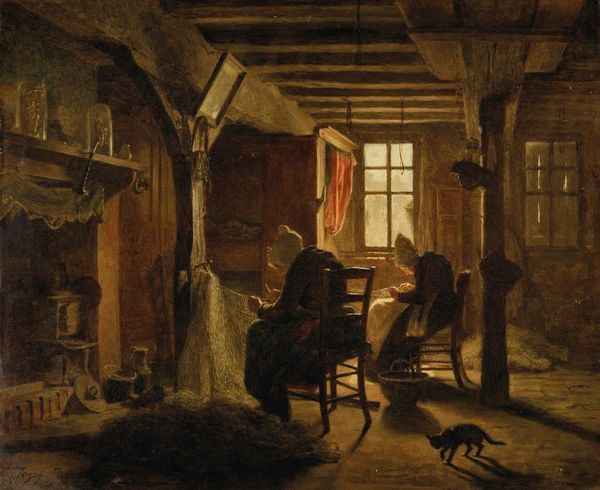
painting, oil-paint
#
portrait
#
dutch-golden-age
#
painting
#
oil-paint
#
oil painting
#
genre-painting
#
mixed media
#
realism
Dimensions: 43.1 x 36.5 cm
Copyright: Public domain
Curator: Adriaen van Ostade's "Interior with a Peasant Family," painted in 1647, offers a glimpse into 17th-century Dutch domestic life. It's currently housed in the Budapest Museum of Fine Arts. Editor: Immediately striking is the darkness. The almost complete absence of light lends a very heavy, ponderous quality. It almost feels oppressive. Curator: Ostade frequently depicted peasant life, focusing on the everyday experiences. Look closely, and you'll notice a symbolic narrative is unfolding—a mother cradling a baby, an elder working, children occupied—echoing familiar roles across time. Editor: The composition really funnels your vision, doesn’t it? From that tiny fire at the bottom-right, leading up to the apex, that strange cupboard arrangement almost center. The use of diagonals adds to the overall tension within that compressed space. Curator: Yes, that tension speaks to something larger. Peasant scenes at the time were not merely observational; they resonated with broader social and moral meanings. Ostade uses archetypes –the nurturing mother, diligent worker— to convey endurance and generational continuity. Notice the deliberate inclusion of humble tools and worn objects. They embody a hardscrabble existence. Editor: Absolutely. Materiality is paramount here. Everything looks weathered and time worn. Note how Van Ostade deploys rough, thick impasto in sections – particularly on the background and around the hearth. He makes the surface itself another element of the narrative; it contributes to a palpable sense of age. Curator: Consider how this artwork was originally received. Such genre paintings provided city dwellers with carefully-crafted narratives of the rural population, at once alienating and aspirational, playing into ideas of the rustic versus the refined. Editor: Interesting, isn’t it, how an emphasis on purely visual qualities ultimately returns us to these considerations of social context? In unpacking formal elements, one always winds up confronting content eventually. Curator: Precisely. Examining the cultural symbolism in Ostade, we recognize his dedication to representing shared struggles through generations, using familiar images to highlight resilient bonds. Editor: So even this, seemingly gloomy corner of the 17th century can reflect brighter echoes through today's lens. Curator: Indeed. I'm drawn to the sense of humanity that cuts through the grime.
Comments
No comments
Be the first to comment and join the conversation on the ultimate creative platform.
